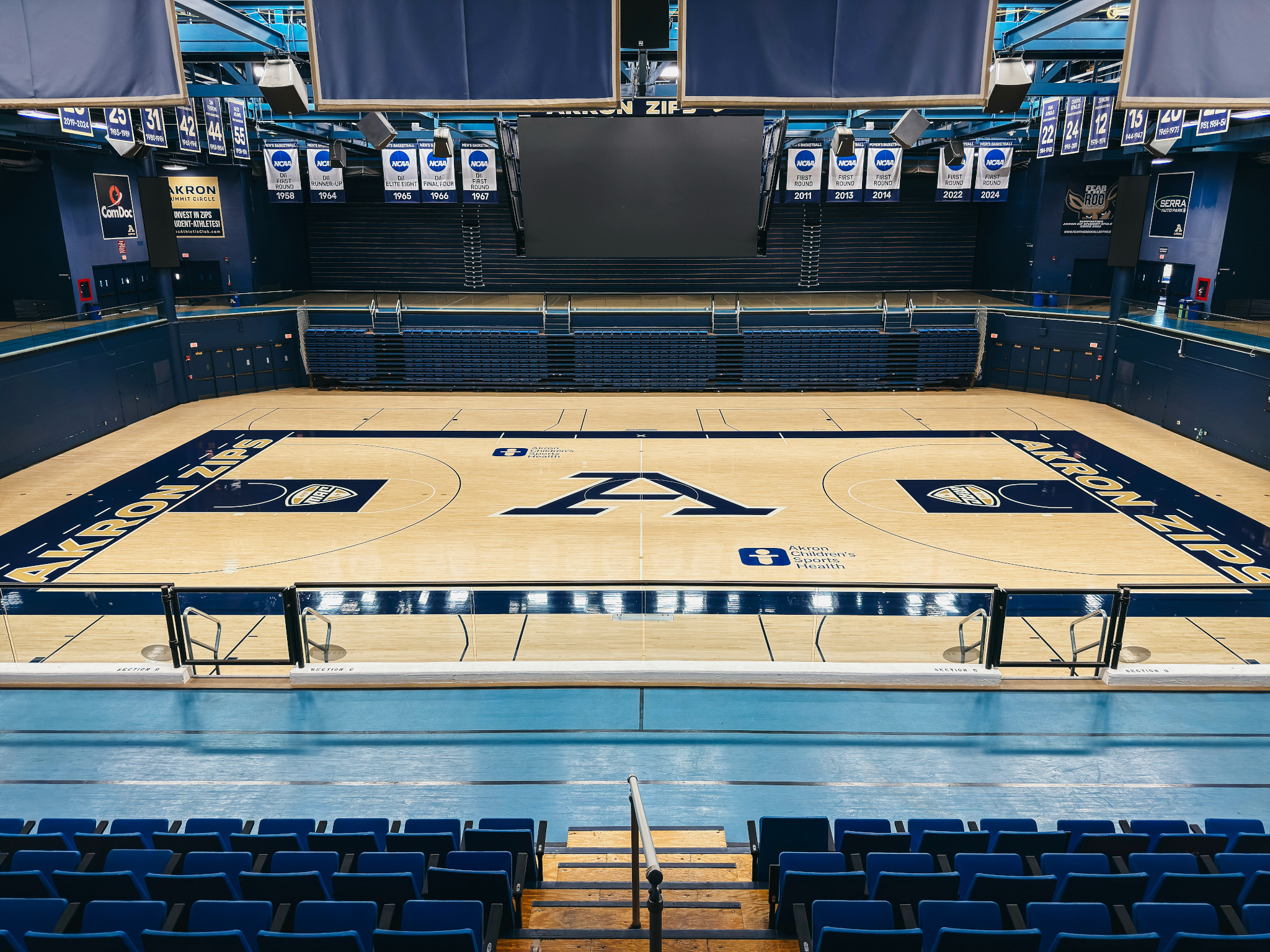When it comes to basketball court flooring, there are several important differences between high school, college (NCAA), and professional (NBA) gym floors. These distinctions go beyond simple court size — they include variations in subfloor construction, wood quality, court dimensions, and overall design aesthetics.
Understanding these differences helps facility managers, coaches, and athletes choose the right sports flooring system for performance, safety, and longevity.
High School Gym Floors
High school basketball courts are typically permanent floor systems with a fixed subfloor. Unlike portable gym floors, these fixed systems offer less shock absorption, which can affect player comfort and joint health over time.
- Subfloor and Wood Quality:
High school gyms generally use second- or third-grade maple flooring. This wood contains more knots and grain variations, making it less uniform than higher-grade maple used in college or pro facilities. - Court Dimensions:
Standard high school basketball courts measure 84 feet long by 50 feet wide, though some older schools—especially in states like Ohio—may have smaller courts. The three-point arc is the shortest of all levels, extending 19.75 feet from the basket. - Design and Maintenance:
High school floors usually feature simpler painted logos and line markings since the flooring is permanent and not easily updated. Regular cleaning and recoating are essential to preserve the surface and prevent wear.
College and University Gym Floors
College and university basketball courts—such as those used in the NCAA—often feature both fixed and portable floor systems. Portable floors are ideal for multipurpose arenas that may host concerts or ice hockey games beneath the court.
- Subfloor and Wood Quality:
These courts use higher-grade maple, typically first-grade for game courts, with some practice courts using second-grade wood. Advanced resilient subfloor systems enhance shock absorption and athlete performance, helping reduce injury risk. - Court Dimensions:
NCAA courts measure 94 feet long and 50 feet wide, matching NBA court length. The three-point arc extends 20.75 feet from the basket. - Design and Maintenance:
College courts often display intricate logos and branded designs, showcasing school pride. Because of frequent games and practices, maintenance—cleaning, sanding, and refinishing—is performed more often to maintain performance and visual quality.
Professional (NBA) Gym Floors
At the highest level, NBA basketball courts represent the pinnacle of gym floor engineering. Every detail—from the type of maple to the construction of portable panels—is designed for elite performance, durability, and presentation.
- Subfloor and Construction:
NBA courts are fully portable, built from interlocking panels that can be assembled, removed, and stored quickly to accommodate other arena events. The floating floor systems help reduce stress on athletes’ joints while maximizing responsiveness. - Court Dimensions:
NBA courts share the same 94' x 50' size as NCAA courts but feature a longer three-point line (23.75 feet) and a wider free-throw lane (16 feet) compared to college and high school dimensions. - Wood Quality and Design:
The NBA uses top-tier, hand-selected maple that provides a consistent grain and clear finish. The result is a crisp, professional appearance ideal for HD broadcasts and branding. Portable floor panels make it easy to update designs and logos as needed. - Maintenance:
Due to constant use, NBA floors are maintained meticulously. Panels are cleaned, resurfaced, and recoated regularly to preserve playability and visual appeal.
From high school gyms to NBA arenas, the quality, size, and structure of basketball courts evolve to meet the demands of players and facilities. High school floors emphasize cost-effectiveness and durability, college courts balance performance with branding, and professional courts deliver unmatched precision and visual excellence.
Whether you’re building a school gym floor, upgrading a college facility, or managing a pro sports arena, understanding these distinctions ensures you choose the right gym flooring system for your athletes and audience.

